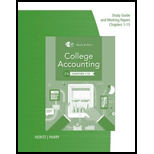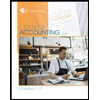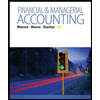
Concept explainers
1.
Journalize the given transactions in the books of Company G.
1.
Explanation of Solution
Debit and credit rules:
- Debit an increase in asset account, increase in expense account, decrease in liability account, and decrease in
stockholders’ equity accounts. - Credit decrease in asset account, increase in revenue account, increase in liability account, and increase in stockholders’ equity accounts.
Journalize the given transactions in the books of Company G.
Transaction on March 20:
| Date | Account Titles and Explanation | Post Ref. | Debit ($) | Credit ($) | ||
| 20-- | ||||||
| March | 20 | Cash Dividends | 33,000 | |||
| Preferred Dividends Payable | 8,000 | |||||
| Common Dividends Payable | 25,000 | |||||
| (Record declaration of preferred and common dividends) | ||||||
Table (1)
Description:
- Cash Dividends is a contra-capital temporary account. This account decreases stockholders’ equity and is closed as the dividends are paid off. So, the account is debited.
- Preferred Dividends Payable is a liability account. Since the liability to pay dividends increased, liability increased, and an increase in liability is credited.
- Common Dividends Payable is a liability account. Since the liability to pay dividends increased, liability increased, and an increase in liability is credited.
Working Notes:
Compute amount of preferred dividends declared.
Compute amount of common dividends declared.
Transaction on April 15:
| Date | Account Titles and Explanation | Post Ref. | Debit ($) | Credit ($) | ||
| 20-- | ||||||
| April | 15 | Preferred Dividends Payable | 8,000 | |||
| Common Dividends Payable | 25,000 | |||||
| Cash | 33,000 | |||||
| (Record payment of dividends) | ||||||
Table (2)
Description:
- Preferred Dividends Payable is a liability account. Since the liability to pay dividends has been paid off, liability decreased, and a decrease in liability is debited.
- Common Dividends Payable is a liability account. Since the liability to pay dividends has been paid off, liability decreased, and a decrease in liability is debited.
- Cash is an asset account. The amount is decreased because cash is paid as dividends, and a decrease in assets should be credited.
Note: Refer to Equations (1) and (2) for the value and computation preferred and common dividends.
Transaction on October 10:
| Date | Account Titles and Explanation | Post Ref. | Debit ($) | Credit ($) | ||
| 20-- | ||||||
| October | 10 | Cash Dividends | 33,000 | |||
| Preferred Dividends Payable | 8,000 | |||||
| Common Dividends Payable | 25,000 | |||||
| (Record declaration of preferred and common dividends) | ||||||
Table (3)
Description:
- Cash Dividends is a contra-capital temporary account. This account decreases stockholders’ equity and is closed as the dividends are paid off. So, the account is debited.
- Preferred Dividends Payable is a liability account. Since the liability to pay dividends increased, liability increased, and an increase in liability is credited.
- Common Dividends Payable is a liability account. Since the liability to pay dividends increased, liability increased, and an increase in liability is credited.
Working Notes:
Compute amount of preferred dividends declared.
Compute amount of common dividends declared.
Transaction on November 10:
| Date | Account Titles and Explanation | Post Ref. | Debit ($) | Credit ($) | ||
| 20-- | ||||||
| November | 10 | Preferred Dividends Payable | 8,000 | |||
| Common Dividends Payable | 25,000 | |||||
| Cash | 33,000 | |||||
| (Record payment of dividends) | ||||||
Table (4)
Description:
- Preferred Dividends Payable is a liability account. Since the liability to pay dividends has been paid off, liability decreased, and a decrease in liability is debited.
- Common Dividends Payable is a liability account. Since the liability to pay dividends has been paid off, liability decreased, and a decrease in liability is debited.
- Cash is an asset account. The amount is decreased because cash is paid as dividends, and a decrease in assets should be credited.
Note: Refer to Equations (3) and (4) for the value and computation preferred and common dividends.
Transaction on November 17:
| Date | Account Titles and Explanation | Post Ref. | Debit ($) | Credit ($) | ||
| 20-- | ||||||
| November | 17 | Stock Dividends | 90,000 | |||
| Stock Dividends Distributable | 25,000 | |||||
| Paid-In Capital in Excess of Par–Common Stock | 65,000 | |||||
| (Record declaration of stock dividends) | ||||||
Table (5)
Description:
- Stock Dividends is a contra-stockholders’ equity temporary account. This account decreases stockholders’ equity and is closed to
Retained Earnings account as the common stock is issued. So, the account is debited. - Stock Dividends Distributable is a stockholders’ equity account. Since common stock is declared to be issued as stock dividends, at par value, equity value is increased. An increase in equity is credited.
- Paid-In Capital in Excess of Par–Common Stock is a stockholders’ equity account. Since the stock is issued in excess of par value, equity value is increased. An increase in equity is credited.
Working Notes:
Compute the number of shares to be distributed as stock dividends.
Compute amount of stock dividends (Refer to Equation (5) for stock dividend shares value).
Compute the amount of stock dividends distributable (Refer to Equation (5) for stock dividend shares value).
Compute paid-in capital in excess of par-common stock (Refer to Equations (6) and (7) for stock dividends and stock dividends distributable value).
Transaction on December 15:
| Date | Account Titles and Explanation | Post Ref. | Debit ($) | Credit ($) | ||
| 20-- | ||||||
| December | 15 | Stock Dividends Distributable | 25,000 | |||
| Common Stock | 25,000 | |||||
| (Record issue of stock dividends in the form of common stock) | ||||||
Table (6)
Description:
- Stock Dividends Distributable is a stockholders’ equity account. Since common stock is issued due to declaration of stock dividends, the value is transferred to common stock, the equity value is decreased. A decrease in equity is debited.
- Common Stock is a stockholders’ equity account. Since common stock is issued, equity value is increased. An increase in equity is credited.
Note: Refer to Equation (7) for value and computation of stock dividends distributable value.
Transaction on December 31:
| Date | Account Titles and Explanation | Post Ref. | Debit ($) | Credit ($) | ||
| 20-2 | ||||||
| December | 31 | Income Summary | 290,000 | |||
| Retained Earnings | 290,000 | |||||
| (Record net income being closed to Retained Earnings account) | ||||||
Table (7)
Description:
- Income Summary is a temporary account used to close the net balance of revenue and expense accounts. Since the net income is closed to Retained Earnings account, the Retained Earnings is credited and Income Summary account is debited.
- Retained Earnings is a stockholders’ equity account. Since revenues are transferred to the account, the value increased, and an increase in equity is credited.
Transaction on December 31:
| Date | Account Titles and Explanation | Post Ref. | Debit ($) | Credit ($) | ||
| 20-2 | ||||||
| December | 31 | Retained Earnings | 156,000 | |||
| Cash Dividends | 66,000 | |||||
| Stock Dividends | 90,000 | |||||
| (Record dividends being closed to Retained Earnings account) | ||||||
Table (8)
Description:
- Retained Earnings is a stockholders’ equity account. Since dividends are transferred to the account, the value decreased, and a decrease in equity is debited.
- Cash Dividends is a stockholders’ equity account. Since the cash dividends are closed to Retained Earnings, the account is reversed and credited.
- Stock Dividends is a stockholders’ equity account. Since the stock dividends are closed to Retained Earnings, the account is reversed and credited.
Note: The total cash dividends paid is $66,000
2.
2.
Explanation of Solution
Posting transactions: The process of transferring the journalized transactions into the accounts of the ledger is known as posting the transactions.
T-account: The condensed form of a ledger is referred to as T-account. The left-hand side of this account is known as debit, and the right hand side is known as credit.
Post the entries that effect the retained earnings balance into the Retained Earnings T-account.
| Retained Earnings–Appropriated for Land Acquisition | |||
| 60,000 | January 1 | ||
| $60,000 | Balance | ||
Table (9)
| Retained Earnings–Unappropriated | |||
| 900,000 | January 1 | ||
| December 31 | 156,000 | 290,000 | December 31 |
| Total | 156,000 | 1,190,000 | Total |
| $1,034,000 | Balance | ||
Table (10)
3.
Prepare a statement of retained earnings of Company G for the year ended December 31, 20-.
3.
Explanation of Solution
Statement of retained earnings: This statement reports the beginning retained earnings and all the changes which led to ending retained earnings. Net income from income statement is added to and dividends is deducted from beginning retained earnings to arrive at the end result, ending retained earnings.
Prepare a statement of retained earnings of Company G for the year ended December 31, 20--.
| Company G | |||
| Statement of Retained Earnings | |||
| For the Month Ended December 31, 20-- | |||
| Appropriated: | |||
| Appropriated for land acquisition | $60,000 | ||
| Unappropriated: | |||
| Unappropriated retained earnings, January 1 | $900,000 | ||
| Add: Net income for the year | 290,000 | ||
| 1,190,000 | |||
| Less: Cash dividends | $(66,000) | ||
| Less: Stock dividends | (90,000) | (156,000) | |
| Unappropriated retained earnings, December 31 | 1,034,000 | ||
| Total retained earnings, December 31, 20-- | $1,094,000 | ||
Table (11)
Hence, statement of retained earnings of Company G shows the ending total retained earnings of $1,094,000 for the year ended December 31, 20--.
Want to see more full solutions like this?
Chapter 21 Solutions
College Accounting - Study Guide / Working Papers 1-15
- Hewlett Processing combines seaweed extract and minerals. After joint manufacturing costs of $5,200 have been incurred, the mixture separates into two products, organic fertilizer and marine collagen. At the split-off point, organic fertilizer can be sold for $8,700, and the marine collagen can be sold for $12,300. The organic fertilizer can be further processed at a cost of $6,800 to make plant food capsules, which could be sold for $19,800. The marine collagen can be further processed at a cost of $9,400 to make beauty supplements, which could be sold for $18,900. What is the net increase (decrease) in operating income from plant food capsules?arrow_forwardSolve thisarrow_forwardCan you explain the process for solving this financial accounting question accurately?arrow_forward
- A business purchased machinery for $210,000 on January 1, 2023.arrow_forwardAn asset owned by Shahidi Technologies has a book value of $36,750 on June 30, Year 5. The asset has been depreciated at an annual rate of $8,200 using the straight-line method. Assuming the asset is sold on June 30, Year 5 for $41,500, how should the company record the transaction? a. Neither a gain nor a loss is recognized on this type of transaction. b. A gain on sale of $4,750. c. A gain on sale of $4,000. d. A loss on sale of $4,750. e. A loss on sale of $4,000.arrow_forwardTaylor Technologies purchased a server system for its data center at a cost of $124,800. The server system has an estimated residual value of $9,200 and an estimated useful life of 8 years. What is the amount of the annual depreciation computed by the straight-line method?arrow_forward
- Can you please help me solve this General accounting problem using accurate methodsarrow_forwardPeralta Distillery has estimated budgeted costs of $134,500, $155,000, and $175,500 for the manufacture of 5,000, 7,000, and 9,000 liters of spirits, respectively, next quarter. What are the variable and fixed manufacturing costs in the flexible budget for Peralta Distillery?arrow_forwardCan you solve this general accounting question with the appropriate accounting analysis techniques?arrow_forward
 College Accounting, Chapters 1-27AccountingISBN:9781337794756Author:HEINTZ, James A.Publisher:Cengage Learning,
College Accounting, Chapters 1-27AccountingISBN:9781337794756Author:HEINTZ, James A.Publisher:Cengage Learning, Corporate Financial AccountingAccountingISBN:9781305653535Author:Carl Warren, James M. Reeve, Jonathan DuchacPublisher:Cengage Learning
Corporate Financial AccountingAccountingISBN:9781305653535Author:Carl Warren, James M. Reeve, Jonathan DuchacPublisher:Cengage Learning Accounting (Text Only)AccountingISBN:9781285743615Author:Carl Warren, James M. Reeve, Jonathan DuchacPublisher:Cengage Learning
Accounting (Text Only)AccountingISBN:9781285743615Author:Carl Warren, James M. Reeve, Jonathan DuchacPublisher:Cengage Learning College Accounting, Chapters 1-27 (New in Account...AccountingISBN:9781305666160Author:James A. Heintz, Robert W. ParryPublisher:Cengage Learning
College Accounting, Chapters 1-27 (New in Account...AccountingISBN:9781305666160Author:James A. Heintz, Robert W. ParryPublisher:Cengage Learning Financial AccountingAccountingISBN:9781305088436Author:Carl Warren, Jim Reeve, Jonathan DuchacPublisher:Cengage Learning
Financial AccountingAccountingISBN:9781305088436Author:Carl Warren, Jim Reeve, Jonathan DuchacPublisher:Cengage Learning Financial & Managerial AccountingAccountingISBN:9781285866307Author:Carl Warren, James M. Reeve, Jonathan DuchacPublisher:Cengage Learning
Financial & Managerial AccountingAccountingISBN:9781285866307Author:Carl Warren, James M. Reeve, Jonathan DuchacPublisher:Cengage Learning





